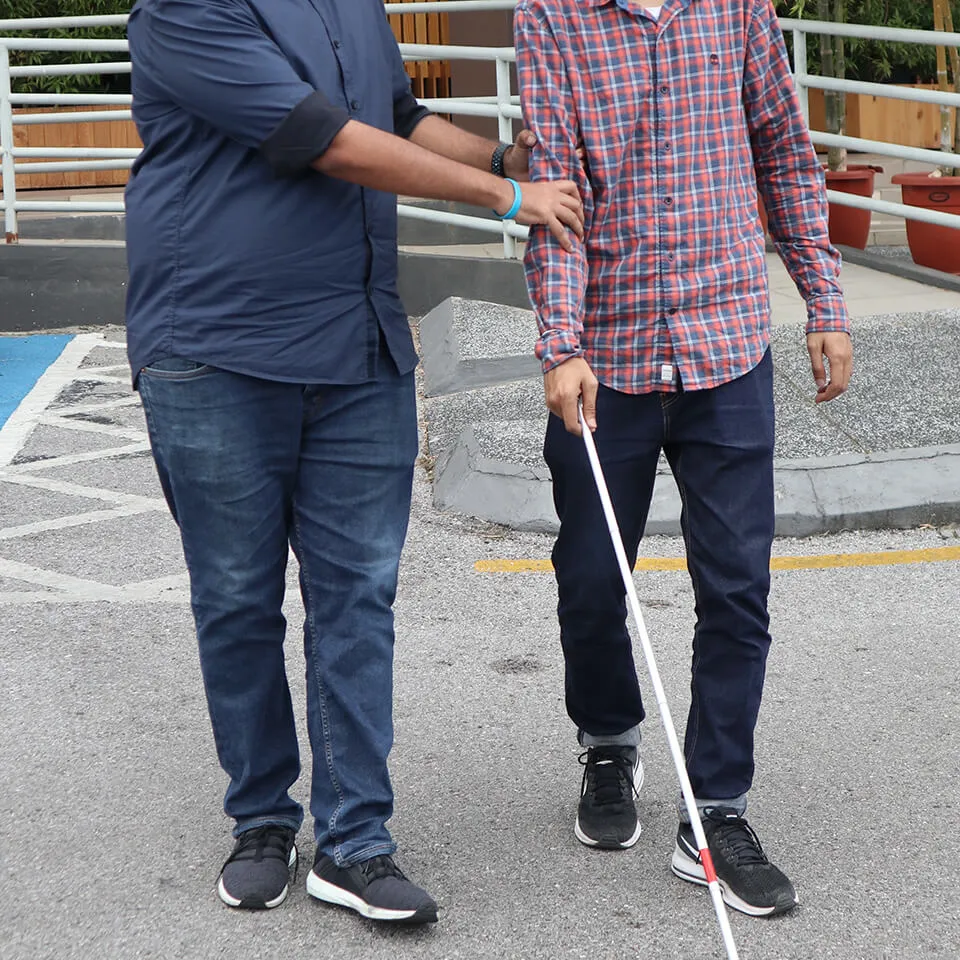It was inferred that despite of the use of visually impaired products the risk of accidents such as falls and collisions among those with vision loss is still relatively high. Moreover, the research shows that less than 9% of the surveyed individuals including both legally blind and blind persons had never fallen due to a tripping accident. This leaves a considerable percentage of people who have fallen even while using mobility aids. Mobility aids includes the usage of traditional products and devices for the blind such as the white cane or the “blind person walking stick” as it is commonly known or an alternative solution, a support animal such as a guide dog. The study shows that the type of mobility aid has little influence on the frequency of accidents.
The common effects of vision related accidents
Visually impaired individuals have the same desire as everyone else to explore their surroundings, to satiate their curiosity and to discover new places. However, achieving these tasks becomes more challenging. Furthermore, a fall can severely affect one’s confidence in their own ability to move around freely and comfortably. This brings much emotional pain which causes them to shy away from socialising and visiting new places while sticking to their usual spots in order to avoid the physical pain caused by tripping or other such accidents.
The question now is how to cope with falling over due to blindness.
How to assist a blind person cope with falling over and its negative effects
As their friends and loved ones, though we may sometimes be worried about their safety, we must take care to encourage our friends who have vision impairment to continue their exploring while we let them know that we will always be supportive of them and their decisions whatever they decide to do. Also, accompany them sometimes to give them moral support if they are receptive to it. This could help them overcome their fears and over time build-up their confidence so they can travel independently. Freedom from fear and independence in movement and mobility are the main goals.
Use of a dog guide does not seem to provide better protection against head–level or fall accidents than proper use of a long cane.
Manduchi, R. and Kurniawan, S. (2011)
Important to realise that individuals who travel more frequently outdoors are at lower risk of head–level or fall accidents than those who leave their house less frequently. Likewise, getting proper orientation and mobility training is of utmost importance.
For more such articles and to be part of our community, subscribe to our mailing list and we will be in touch with you.
Stay tuned!
Related Post:
Read on how to guide a visually impaired person here.
BAWA Cane aims at minimising such accidents by using advanced technology that is typically used for other purposes to enrich the lives of the blind and visually impaired by using a clip-on device that can equip them with a digital smart white cane to detect almost any obstacle that could cause problems. This allows them to be more confident while moving around in unfamiliar surroundings.
This blog post is contributed by Tarun Mark Nair during his internship with BAWA Cane.
References:
Mobility-Related Accidents Experienced by People with Visual Impairment
Mobility, Safety and Experiences of Blind and Low Vision Pedestrians in Victoria, Australia
